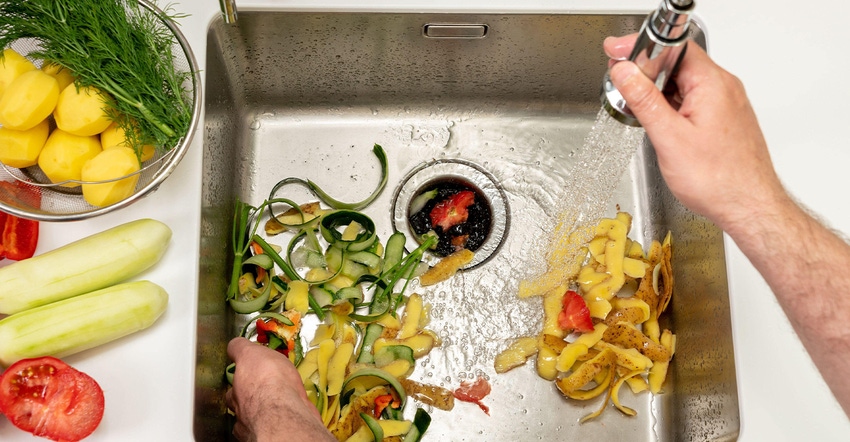SEPURA Helps Turn Wastewater Facility Headache Into Assets
Garbage disposals are a quick and easy way to reduce food waste in homes, prevent odor, and keep animals and insects out of trashcans. Victoria, British Columbia-based SEPURA has an alternative—a system installed under kitchen sinks that separates out 99.9 percent of solids, which move into a sealed, odorless container while liquid flows through and down the sink drain.

Garbage disposals are a quick and easy way to reduce food waste in homes, prevent odor, and keep animals and insects out of trashcans.
But scraps don’t simply go away once they slide down the drain, nor do some of the problems they can trigger— they clog home pipes; quickly fill septic systems; and cause backups and damage at wastewater treatment facilities that can cost a single plant millions of dollars. Europe bans garbage disposals to bypass these issues; and a few cities in Canada and the U.S. have made this move.
Victoria, British Columbia-based SEPURA has an alternative—a system installed under kitchen sinks that separates out 99.9 percent of solids, which move into a sealed, odorless container while liquid flows through and down the sink drain.
The product is the brainchild of Victor Nicolov, co-founder and CEO of SEPURA, who conceived and developed the idea as a mechanical engineering student after a garbage disposal fiasco in his apartment (a story for later in this article). Nicolov sells units direct to homeowners for $799.99, though he’s started shipping to homebuilders, a niche he anticipates will become his young company’s bread and butter.
While SEPURA is an ecofriendly product, diverting organics from landfill and wastewater treatment plants and cutting greenhouse gas emissions, that’s not the main pitch to targeted end users. What consumers hear is that the system is pain-free to use—really not much different than flipping the switch on the garbage disposal.
“It has to be competitive with, and as easy as, what you were already doing. At the end of the day, it’s good for the planet, too,” Nicolov says. But convenience is key to getting consumers to see and appreciate that.
It's a fairly automatic process. The unit, which interfaces with kitchen plumbing, even turns itself off; it’s on a timer.
With the push of a button an auger kicks in, spinning and pushing solids along a filter, which separates the solids. The filter’s holes are so tiny that almost no scraps get through; rather they fall into the sealed bin or “collection center” below the sink. A carbon activated filter on top of the bin traps odors.
Sensors detect utensils or other potential obstructions; they detect water levels in the sink; and can tell when the bin is nearly full. Automatic shut-off mechanisms prevent overflow or blockages.
People put the mushed scraps out to the curb for collection or take them to drop-offs to be turned into compost. Otherwise, they go directly into their own yard compost piles.
Collection infrastructure still lags across the globe. But options are expanding, driven by policy. The European Union has proposed setting legally binding targets for member states to cut food waste by 50 percent by 2030. A few countries are already taking action; in Austria door-to-door kitchen waste collection is common. In the U.S., California requires food scrap collections for residents and businesses, and policy is motivating build-out of residential programs elsewhere, with Boston and New York City among the latest metropolises to announce major rollouts or expansions.
SEPURA has managed to stay busy trying to keep up with evolving demand for food waste solutions, having sold several thousand of its units since shifting to full production mode about a year ago. Sold out of its first production run, the small startup is taking back orders for the second run; its biggest challenge is keeping up with what the market is asking for.
The key to how SEPURA works is separation rather than chopping or grinding. As Nicolov fast learned by talking to municipalities, the latter two options just reduce scraps, but not enough to prevent them from moving into the sewage system. And they’re energy intensive while daily power consumption for this appliance is about what a lightbulb would use in the same timeframe, and the system requires no water.
Finetuning the product entailed a lot of trial and error, cranking out multiple prototypes, and asking municipalities, plumbers, and homeowners what they wanted, hearing their issues, and finding a way past them.
The product underwent testing in homes. And it was run hard at corporate offices with large kitchens under heavy use to quickly see how it would hold up with five years of use in a typical household.
It was just before Nicolov started down the product development path that he first learned about garbage disposals’ limitations and impact they can have on the environment.
The disposal in his condo backed up and shut down when he tossed a boatload of potato peels down the drain.
“Those peels flew everywhere. It was an old building and had metal piping that I had to get to, disassemble, and empty. You have to be fast because methane escapes. I cleaned it out and had a terrible time reassembling it,” he recalls.
He turned to Google to try and discover what caused the problem and to figure a way around it.
“That’s when I learned that cities don’t like garbage disposals because what goes into them will accumulate somewhere eventually.
“I wanted to find an alternative. I didn’t not want a gross, smelly bucket on my counter and thought there must be a device to automatically separate the food and water and prevent clogging,” he recalls.
But there wasn’t anything. Even in high-end homes with top-line kitchen appliances there was no better solution than to place a bucket in the sink or counter for food. So, his work began to find a better answer. An answer that made sense.
“Why send it on to facilities where it costs a lot to filter it out of water, or have it possibly end up in landfill or the ocean when it can be collected separately at the source to be turned into compost or energy?” he asks.
His idea got the attention of BLANCO who manufactures systems that incorporate sinks, faucets, cabinets, and other components in one unit. The European-based company invested $3.7M in seed funding to scale SEPURA’s North American market.
BLANCO’s Jan Ribbeck, head of Global Corporate Communications, says the company was sold on the combination of an innovative technology with a concrete consumer benefit and expected sustainability effects on food waste—with the food waste piece especially big.
“We are interested in integrating principles of the circular economy into our business model because we see a major lever for sustainable development there,” he says.
The SEPURA team expects to ride on the trend that’s happening with residential collections.
“Even though there aren’t a lot of programs in North America now, every year more come on line. Access is almost doubling,” says Nicolov.
“It’s a clear direction we are heading in. Governments realize not only does food waste cause problems you can avoid, but you could use it for something valuable.”
About the Author(s)
You May Also Like




